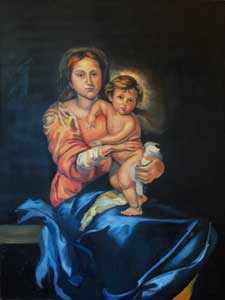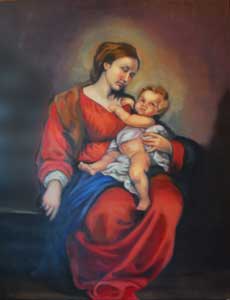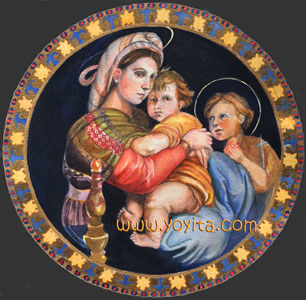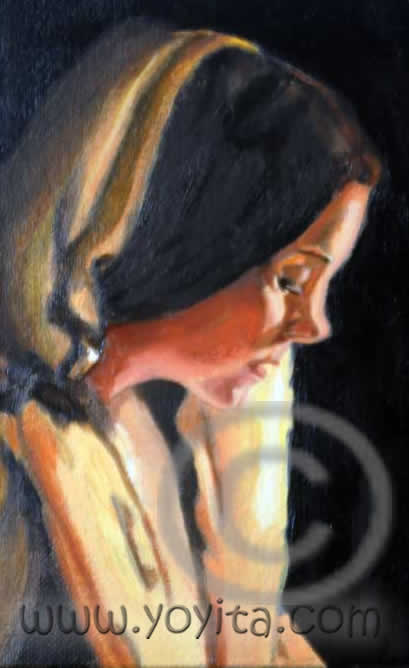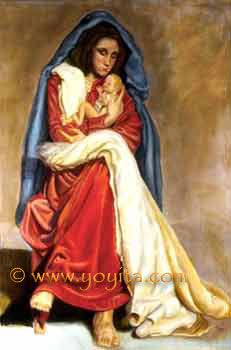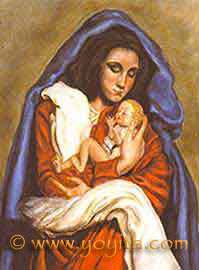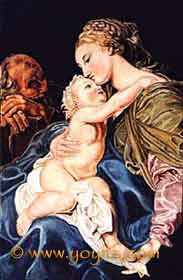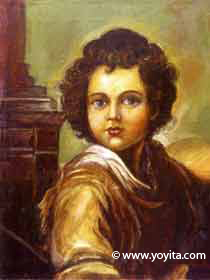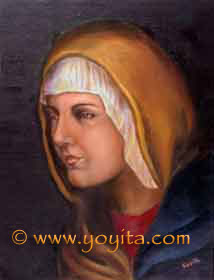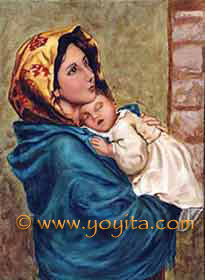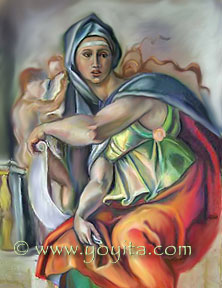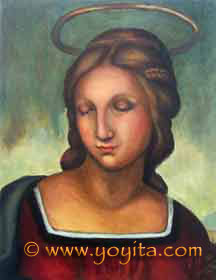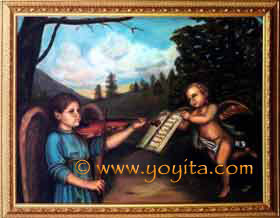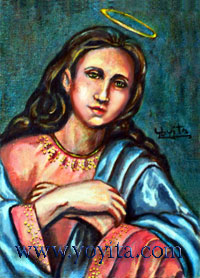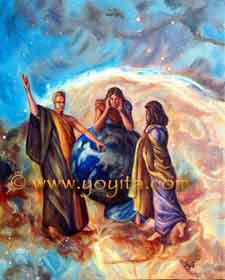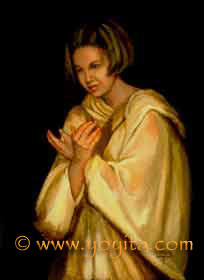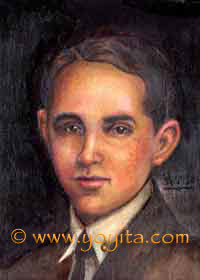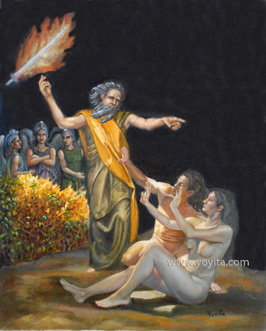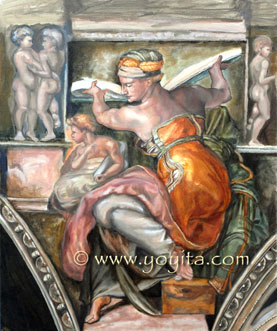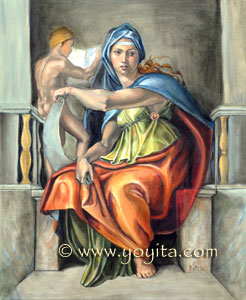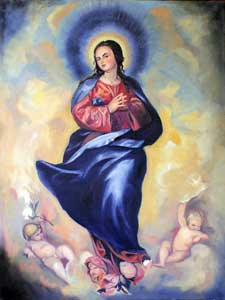|
Historians consider the Renaissance to be the beginning of modern history. The name renaissance, comes from the french equivalent of the italian word rinascita, which literally means "rebirth" it describes the revival of interest in classical literature and the classical ideals experimented in European culture during the 15th y 16th centuries. European scholars became favoured intellectual freedom studying the world around them. The renaissance began in northern Italy and then spread through Europe it was preceded by the Middle Ages and followed by the Reformation.
According to the usual description, the Italian Renaissance on the 15th century, spreaded through the rest of Europe, and represented a reconnection of the west with classical antiquity, the absorption of knowledge—particularly mathematics and astronomy from the Arabs, the return of experimentaion, the focus on the importance of living well in the present (e.g. humanism), an explosion of the dissemination of knowledge brought on by printing and the creation of new techniques in art, poetry and architecture which led to a radical change in the style, and substance of the arts and letters. Outstanding Italian humanists of that epoch visited Byzantium in order to learn Greek and to buy old manuscripts, saved from pillages, conflagrations, and devastation of the invaded country. Many Greek texts were brought from Constantinople. Europe was ransacked for copies of the long unused Latin classics and copyists multiplied them. Libraries were founded, and schools for the study of both Greek and Latin in their classic forms were opened at Rome, Mautua, Verona, and many other towns This period, in this view, represents Europe emerging from a long period as a backwater, and the rise of commerce and exploration. After the fall of Constantinople in 1453 the Renaissance gained a further impetus due to a number of Greek humanists who moved from Byzantium to Italy. In 1462 the Platonic Academy was opened in Florence under the patronage of Cosimo de' Medici who would encourage artist in all disciplines icluding Michel Angel who studied there.
Italian cities such as Naples, Venice, and Genoa became centers of trade between Europe and the Middle East. Arab scholars preserved the writings of the ancient Greeks in their libraries. When the Italian cities traded with the Arabs, ideas were exchanged along with goods. These ideas, preserved from the ancient past, served as the basis of the Renaissance. There was an open minde to foreing ideas. The Italian Renaissance is often labeled as the beginning of the "modern" epoch.
This is a very important time for the Fine Arts and the artist, there is a proliferation of new schools in Italy, they search for perfection, developing perspective and aerial perspective in color by Leonardo Da Vince; we see the birth of Ateliers as schools of paintings such as of Giorgione, Raphael, Leonardo, Bellini, and Michael Angelo, and the Flemish school in the Netherlands. They separate form the anonymity of the craft and become professionals in its own right. Renaissance artists are the first to be regarded as professionals. They start signing thier works and achieve a new status in society.
Multiple Renaissances
During the last quarter of the 20th century many scholars took the view that the Italian Renaissance was perhaps only one of many such movements. This is in large part due to the work of historians like Charles H. Haskins (1870–1937), who made a convincing case for a Renaissance of the 12th century, as well as by historians arguing for a Carolingian Renaissance. Both of these concepts are now widely accepted by the scholarly community at large; as a result, the present trend among historians is to discuss each so-called renaissance in more particular terms, e.g., the Italian Renaissance, the English Renaissance, etc. This terminology is particularly useful because it eliminates the need for fitting The Renaissance into a chronology that previously held that it was preceded by the Middle Ages and followed by the Reformation, which many believe to be inaccurate. The entire period is now often replaced by the term "Early Modern". (See periodisation, Lumpers and splitters)
Other periods of cultural rebirth have also been termed a renaissance, such as the San Francisco Renaissance or the Harlem Renaissance.
Our modern era with the invention of the internet brings ideas of a New renaissance, being the internet as important as the printed press was in the times of Guttemberg, now we have information at hand and our world has becomed bombarded by imagery. One can but wonder how this will influence future generations. The worls has become small and now a days the facility to adquiere knowledge and trade should influence the modern man.
These are some of the masters of the Italian Renaissance:
Rafael Sanzio, Botticelli, Leonardo da Vinci, El greco,
Goya, Diego Velazquez, Lorenzo Ghiberti, Donatello, Miguel Angel Buonarroti, Piero de la Francesca, Uccello, Masaccio, Juan de Borgona, Vasari, Francesco Albani, Jackson, Mariotto Albertinelli, Alessandro Allori, Fray Angelico, Amico Aspertini, Bachiacca, Baciccio, Mario Balassi, Alessio Baldovinetti, Giacomo Balla, Federico Barocci, Fra Bartolommeo, Jacopo Bassano, Leandro Bassano, Pompeo Batoni, Battistello, Guiseppe Bazzani, Beccafumi, Giovanni Bellini, Jacopo Bellini, Marco Benefial, Gian Lorenzo Bernini, Alonso Berruguette, Paolo Emilio Besenzi, Bartolomeo Bimbi, Boccaccino, Giovanni Antonio Boltraffio, Andrea Boscoli, Guiseppe Bottani, Sandro Botticelli, Bramantino,Leonart Bramer, Agnolo Bronzino, Alberto Burri, Lodovico Buti, Francesco Cairo, Jacques Callot, Giullo Campi, Canaletto,Caravagio, Vittore Cartaccio, Giulio Carpioni, Annibale Carracci, Rosalba Giovanna Carriera, Niccolo Cassana, Andrea del Castagno, Valerio Castello, Giovanni Benedetto Castiglione, Bernardo Cavallino, Bravo Cecco, Cerano, Cigoli, Cima Da Conegliano, Cimabue, Jacopo di Cione, Nardo di Cione, Viviano Codazzi, Andrea Commodi, Francesco Conti, Jean-Baptiste Camille Corot, Correggio, Domenico Corvi, Lorenzo di Ottavio Costa, Giuseppe Maria Crespi, Cristofano Di Papi Dell Altissimo, Daddi Bernardo, Cesare Dandini,Michele Desubleo, Carlo Dolci, Domenichino, Domenico Veneziano, Dosso Dossi, Duccio Di Buoninsegna, Empoli, Giovanni Domenico Ferretti, Ciro Ferri, Domenico Fetti, Felice
Ficherelli, Orazio Fidani, Girolamo Forabosco, Antonio Franchi, Francesco Francia, Franciabigio, Giovani Antonio Fumiani, Francesco Furini, Anton Domenico Gabbiani, Agnolo Gaddi, Taddeo Gaddi, Gaetano Gandolfi, Giovanna Garzoni, Gentile Da Fabriano, Artemisia Gentileschi, Pier Leone Ghezzi, Domenico Ghirlandaio,Ridolfo Ghirlandaio, Giambologna, Luca Giordano, Giorgione, Giottino, Giotto Di Bondone, Giovanni Da Milano, Giovanni Da San Giovanni, Giovanni Dal Ponte, Giovanni del Biondo, Giovanni di Paolo, Giulio Romano, Francesco Granacci, Benedetto Vincenzo de Greyss, Francesco Guardi, Guercino, Joseph Heintz the-Younger, Jacopo Del Sellaio, Giulia Lama, Neroccio de Landi, Leonardo Da Vinci, Jacopo Ligozzi, Filippino Lippi, Fra Filippo Lippi, Lorenzo Lippi, Alessandro Longhi, Pietro Longhi, Ambrogio Lorenzetti, Pietro Lorrenzetti, Lorenzo Di Alessandre Da Sanseverino, Lorenzo di Credi, Lorenzo Monaco, Lorrain Claude, Lorenzo Lotto, Johann Lys, Alessandro Magnasco, Rutilio Manetti, Bartolomeo Manfredi, Vincenzo Mannozzi,
Andrea Mantegna, Giovanni Martinelli, Simone Martini, Masaccio, Masolino, Lucio Massari, Master of the Bardi Saint Francis, Master of Saint Cecilia, Master of the Cross, Master of Greve, Master of Magdalene, Matteo di Giovanni, Ludovico Mazzolino, Livio Mehus, Jacopo di Meliore, Melozzo da Forli, Lippo Memmi, Michelangelo Buonarroti, Giorgio Morandi, Morazzone, Giovan Battista Moroni,Cristoforo Munari, Francesco de Mura, Filippo Napoletano, Niccolo Di Bonaccorso, Orcagna, Gregorio Pagani, Palma Il Vecchio, Marco Palmezzano, Paolo Veneziano, Parmigianino, Domenico Parodi, Lorenzo Pasinelli, Passignano, Giovani Antonio Pellegrini, Perin Del Vaga, Perugino Pietro, Pesellino, Giovanni Battista Piazzetta, Piero Della Francesca,Piero Di Cosimo, Pietro da
Cortona, Simone Pignoni, Giovan Battista Pittoni, Antonio del Pollaiuolo, Piero del Pollaiulo, Jacopo Pontormo, Nicolas Poussin, Andrea Pozzo, Preti Mattia, Raffaelino Del Garbo, Raphael, Giuseppe Recco, Nicolas Regnier, Guido Reni, Pandolfo Reschi, Sebastiano Ricci, Salvator Rosa, Cosimo Rosselli, Nicola Maria Rossi, Fiorentino Rosso, Francesco Rustici, Andrea Sacchi, Carlo Antonio Sacconi, Giovanni Camillo Sagrestani, Andrea del Sarto, Sasseta, Sassoferrato, Giovanni Gerolam Savoldo, Emilio Savonanzi, Sebasiano Del Piombo, Semplice Da Verona, Luca Signorelli, Francesco Solimena, Giovan Battista Spinelli, Gherardo Starnina, Bernardo Strozzi, Justus Sustermans, Giambattista Tiepolo, Tintoretto, Tiberio Titi, Titian, Francesco Trevisani, Cosme Tura, Alessandro Turchi, Paolo Uccello, Ugolino Di Nerio, Gaspare Vanvitelli, Giorgio Vasari, Aantonio Maria Vassallo, Vecchietta, Diego Velazquez, Giuseppe Vermiglio, Veronese, Andrea del Verrocchio, Bartolomeo, Bernardino Zenale, Jacopo Zucchi |
|
|






